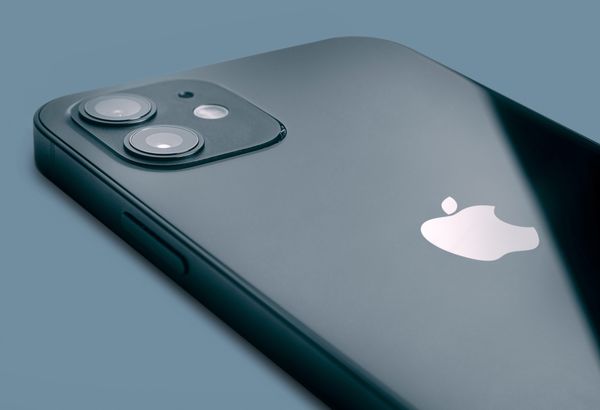What Security Risks Do iPhone Users Face in 2024?

The mobile threat landscape is constantly evolving, with bad actors increasingly targeting our most-used devices with scams and malware.
While Android users are indisputably more exposed to cyber threats, iOS over the years hasn’t quite proven to be a safe haven either. In fact, one could argue that threats tailored to the Apple ecosystem are better suited to their goals.
Some attacks on iOS devices are highly-targeted and use million-dollar exploits amid geopolitical qualms. Others take advantage of inherent weaknesses in the implementation of old technologies, like SMS. Whichever the case, attackers have avenues aplenty to target the Apple install base. If you’re an iPhone user, here are some of the key threats to look out for in 2024.
SMS scams (smishing)
As noted in previous articles on Hotforsecurity, the Short Messaging Service (SMS) still in use five decades after inception has many security drawbacks – chief among them: it’s a primary attack vector for scammers. This is because many people still use it as a primary texting hub, while companies rely on this channel to communicate with clients, from delivery notifications to multi-factor codes. Attackers impersonate companies to:
· steal user credentials for account takeovers
· intercept one-time authentication codes to access financial accounts or to drain crypto wallets
· send unsuspecting recipients to phishing websites
· get victims to click on tainted links to install malware
… and the list goes on.
Apple has implemented a extra defenses in recent software updates to combat the growing threat of scams arriving via SMS / iMessage. But users must still be vigilant and treat every suspicious or unsolicited communication as a potential threat. For more peace of mind, iPhone users should consider deploying a dedicated security solution like Bitdefender Mobile Security. The app comes equipped with a powerful new Scam Alert feature which automatically scans your incoming texts and calendar invites for scams and malicious links.
Spyware
One of the most prolific threats targeting iOS devices in recent years has been and continues to be commercial / mercenary spyware. It’s a growing hazard for iPhone-wielding journalists, activists, and high-profile political figures – a fact acknowledged by governments worldwide and Apple alike.
Mercenary spyware, typically funded and developed by state-sponsored actors, exploits software weaknesses yet-undiscovered by Apple or white-hat researchers. Working exploits for these flaws sell for millions and are used in geopolitical disputes and wars to obtain sensitive or classified information.
In a never-ending cat-and-mouse game, Apple over the years has issued periodic security updates to address the vulnerabilities exploited by spyware actors on an ongoing basis. Making matters worse, many attacks require no action on the victim’s end, in what is known as a zero-click attack. This means targeted spyware attacks typically go unnoticed until it’s too late. iPhone owners who feel they may have a target on their back should always make security updates a priority. High-profile figures should also keep the Lockdown Mode toggle at arm’s reach whenever the situation calls for it.
Shady apps
Two-factor authentication (2FA) has become imperative in today’s digital world, as criminals have learned to compromise almost any password. And while SMS-based 2FA is better than no 2FA at all, authenticator apps provide even stronger safeguards. However, even 2FA apps come of a hefty dose of risk.
At the start of the year, Elon Musk’s X (formerly Twitter) announced it was changing its approach to two-factor authentication, prompting non-blue users to abandon SMS-based 2FA and adopt an authenticator app instead.
The move incentivized dodgy developers to flood the app stores with 2FA apps deceptively designed to get users to pay hefty sums for features otherwise offered free of charge by legitimate developers. Bitdefender offers a comprehensive guide to spot the warning signs.
This method is used across many other apps and services, not just authenticator apps. As a rule of thumb, only use apps and services from trusted vendors. Compare different offerings from different developers, so you can better determine whether or not you need to pay for a service.
Common (mobile) threats
In addition to these key attack avenues typically used to infect iOS devices, there are also plenty more common threats faced by mobile users in general, including:
Social engineering (phishing at large) – iPhone owners, like most other mobile users, are on the receiving end of malicious emails, messages, or fake websites designed to trick them into revealing sensitive information, such as passwords or credit card details.
Malicious apps – Malicious apps, often disguised as legitimate ones, are designed to compromise user data or even introduce malware to the device if the user sideloaded the app after jailbreaking their iPhone.
Public Wi-Fi – Connecting to unsecured or compromised Wi-Fi networks can expose iPhone users various threats, including eavesdropping and man-in-the-middle attacks.
iCloud compromise – Weak passwords or falling victim to phishing attacks can compromise your iCloud account, exposing personal, sensitive data, including your photos if you chose to have them stored in iCloud.
Location tracking and privacy – Some apps may misuse location data, posing privacy risks, so you should always be cautious about granting unnecessary permissions to apps.
As an iPhone user, you can step into a safer 2024 with these tips in mind. Be cautious that the mobile threat landscape is constantly evolving, meaning it’s a good idea to stay abreast of the latest developments in cybersecurity and the best practices thereof. As always, consider using a dedicated security solution on all your devices, to fend off the wide array of threats targeting regular netizens everywhere.
tags
Author
Filip has 15 years of experience in technology journalism. In recent years, he has turned his focus to cybersecurity in his role as Information Security Analyst at Bitdefender.
View all postsRight now Top posts
How to Protect Your WhatsApp from Hackers and Scammers – 8 Key Settings and Best Practices
April 03, 2025
Outpacing Cyberthreats: Bitdefender Together with Scuderia Ferrari HP in 2025
March 12, 2025
Streamjacking Scams On YouTube Leverage CS2 Pro Player Championships to Defraud Gamers
February 20, 2025
How to Identify and Protect Yourself from Gaming Laptop Scams
February 11, 2025
FOLLOW US ON SOCIAL MEDIA
You might also like
Bookmarks








